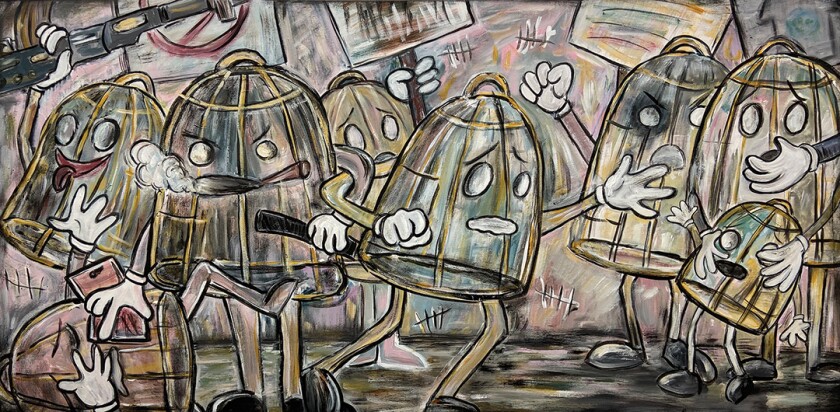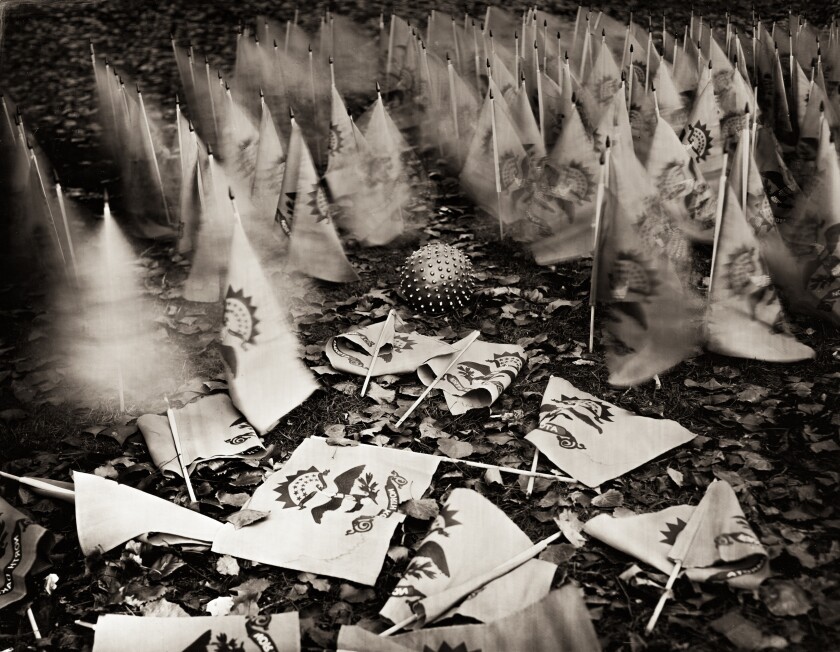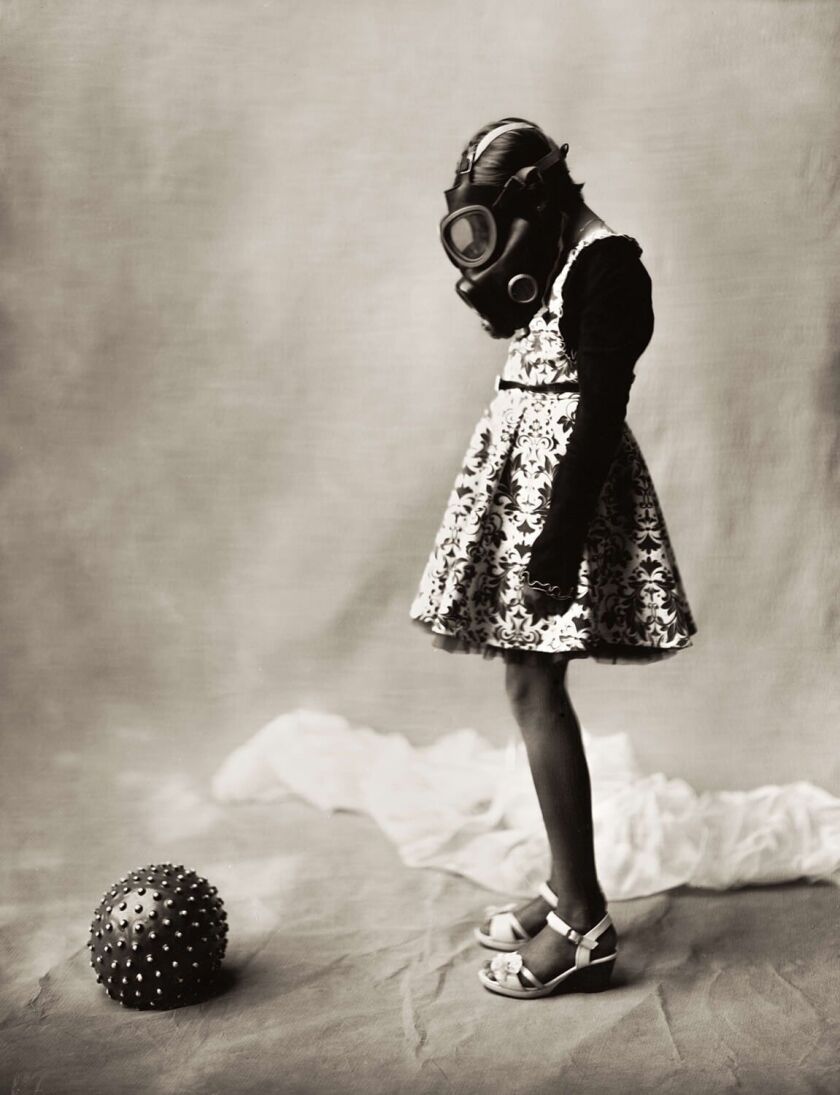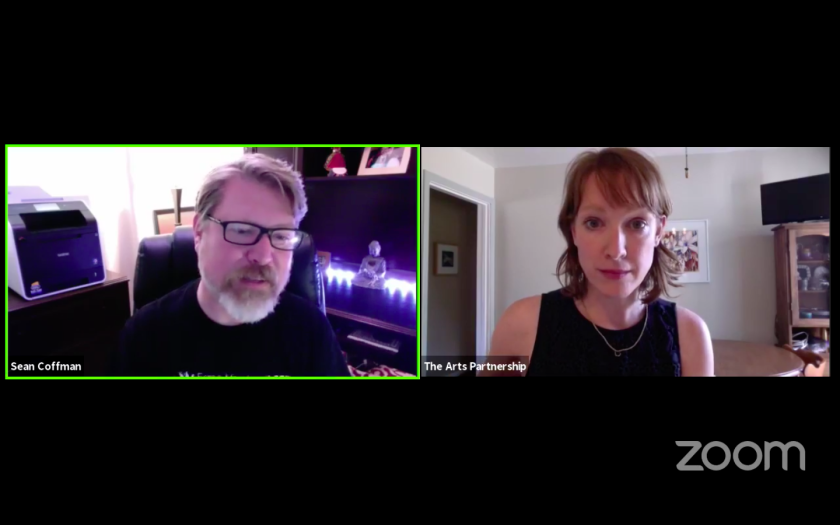FARGO — There’s one central theme at the core of the work that artists create — it’s their humanity.
That common thread is explored through diverse themes in the North Dakota Human Rights Arts Festival now on display at the Plains Art Museum in downtown Fargo.
The energy that flows through the fourth annual exhibition is a reflection of a challenging year.
“As it turns out, 2020 has left artists with a lot to say,” explains Sean Coffman, executive director of the Human Family.
ADVERTISEMENT

Starting in Fargo and then traveling across the state at the end of this month, the festival will be displayed in six different museums and galleries over eight months this year in Grand Forks, Bismarck, Jamestown, Minto and Williston.
With challenges arising from the pandemic, this year’s exhibition was uncertain as Coffman went about finding venues and drawing up a call for artists.
“If we had submissions, we’d move forward — if we didn’t, we’d postpone for a year,” Coffman says.
Waving the submission fee and offering to help pay shipping costs where it was needed, Coffman went ahead with optimism.
As it turns out, they received more submissions than ever before. In total, 52 works were selected for the 2021 Human Rights Arts Festival ranging from drawings, paintings and photography to experimental films, installations and poetry.
ADVERTISEMENT
One such work entitled “North Dakota Departed” uses flags to visually represent lives lost from COVID-19. In the traditional wet plate collodion process, Shane Balkowitsch uses a chemical process to capture ghostly figures waving in the wind with a familiar corona-type ball at the center.

The photograph was taken at the North Dakota Capitol as part of a collaboration with Carl Young, who started the memorial project to honor the passing of his mother.
For Balkowitsch, these fallen flags are not simply objects to photograph. They are a reminder of his connection to people passing away through his work as an oncology nurse.
“Death and dying is nothing new to me. I have an intimate relationship with it,” he says.
ADVERTISEMENT
As a latecomer to the profession, Balkowitsch got into nursing when he was 28. His grandfather, Pius Fischer, had a stroke, and he would regularly visit him at St. Vincent’s nursing home in Bismarck.
The nurses there soon recognized his respectful bedside manner and recruited him to sit with patients who were alone and nearing the end.
“They would page me and I would sit with these residents and hold their hand while they were passing — and that’s how I found nursing,” Balkowitsch says.
One of nine other glass plates from his COVID-19 series created during isolation, the works by Balkowitsch are now permanently curated at the Plains Art Museum, including other works such as “Girl with Virus.”

ADVERTISEMENT
“I know all the things we would do as oncology nurses to save one life, and here we have all these lives being lost. It's very, very sad,” Balkowitsch says.
Although a strong backdrop to the exhibition, the pandemic wasn’t alone in driving the narrative of human rights topics this year.
Other works explore civil and political rights, including the Black Lives Matter movement, such as the sculptural piece entitled “I Can’t Breath” by Jeremy Colbert.
Other works explore mental health, Indigenous and immigrant rights and female empowerment issues, among others.
“As artists and as activists for human rights and social change, there was so much to speak to,” Coffman concludes.

ADVERTISEMENT
The North Dakota Human Rights Arts Festival is supported in part by a grant from the North Dakota Council on the Arts, which receives funding from the North Dakota Legislature and the National Endowment for the Arts, and in part by the Arts Partnership, with support from the cities of Fargo, Moorhead and West Fargo.
If you go
What: North Dakota Human Rights Arts Festival
Where: Plains Art Museum, 704 First Ave. N., Fargo
When: On display through Jan. 30
Reception: Due to uncertainty around the pandemic, a reception has not been announced at this time. If or when it is possible, whether in person or virtually, the event will be scheduled in a few weeks. Visit human-family.org for more info.
This article is part of a content partnership with The Arts Partnership, a nonprofit organization cultivating the arts in Fargo, Moorhead and West Fargo. For more information, visit http://theartspartnership.net .








